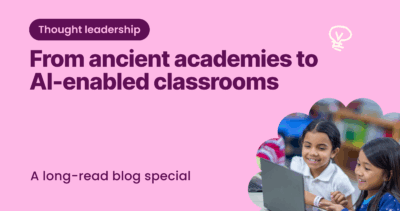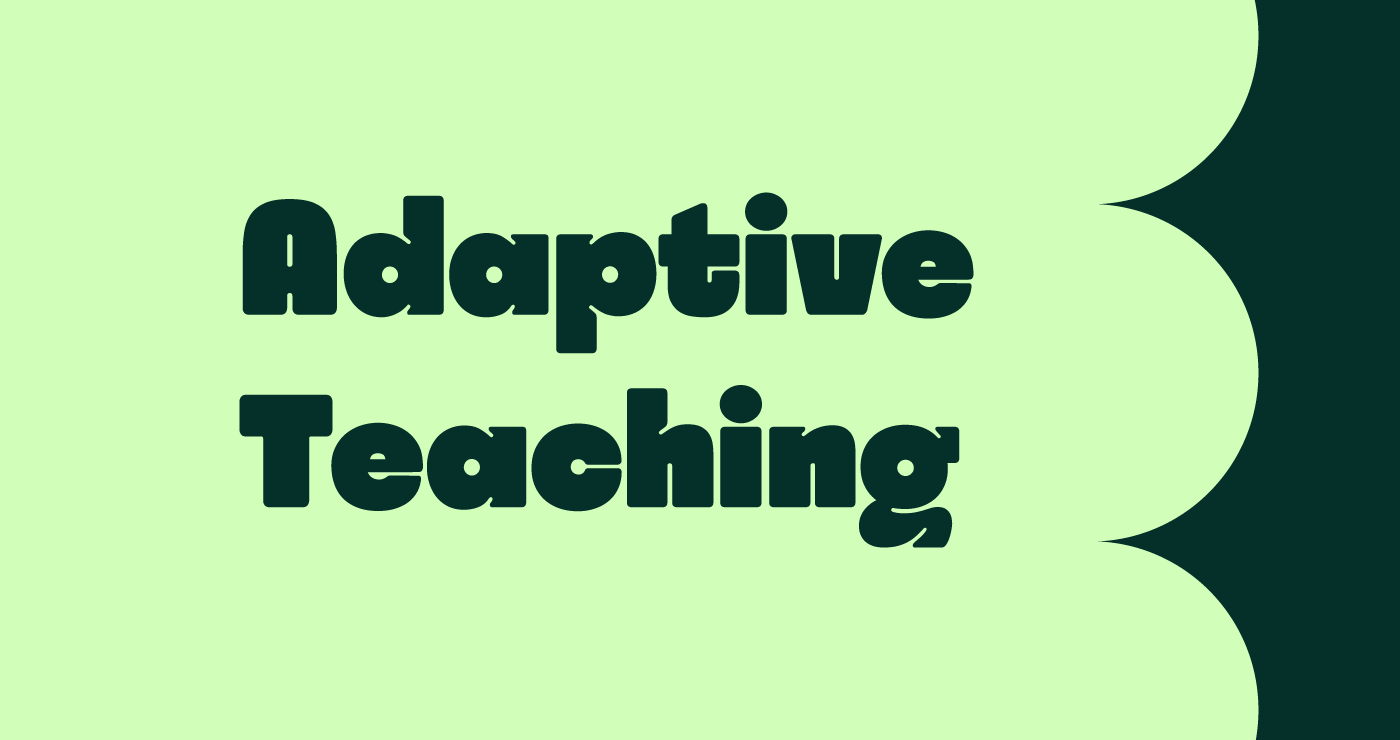
Shirin Bradfield
Anyone who has been in the education industry for more than a week will understand teaching is always evolving. As the world changes, so do young people, and the teachers’ standards and lesson plans need to change with them. Each year, more research and studies show different approaches and how each student is a unique kind of learner. Ever since Aristotle claimed that “each child possesses unique talents and skills,” paving the way for the theory of learning styles, teachers have worked to deliver the most high-quality teaching they possibly can. Through the internet (and nifty little blogs like these) our shared understanding of students’ needs is better than ever! Adaptive teaching tailors instruction to meet unique learner needs, fostering engagement and empowerment.
What is Adaptive Teaching?
At some point in your career, either in your early years at teacher college or during professional development, you’ve probably come across the theory of differentiation: tailoring lesson plans to suit the special educational needs of different students. Officially, it only came around in 1999. Differentiation is basically the principle that when it comes to education, one size does not fit all. And that idea has been around for a very long time indeed (remember our Ancient Greek friend). Differentiation can take many different forms in the classroom. It can be putting text materials on tape, using spelling or vocabulary lists at the readiness levels of students, or presenting ideas through both auditory and visual means. This style of delivering your curriculum to different groups of pupils in a variety of ways is similar to, but not quite the same as a Universal Design for Learning approach. Read our blog on UDL to identify the differences and decide for yourself which one is best for you and your learners.
Adaptive teaching means taking differentiation one step further. Adaptive instruction is a teaching approach that focuses on the entire class while still responding to individual student needs.
What are the benefits of Adaptive Teaching?
Adaptive teaching is an approach that tailors instruction to meet the unique needs of each learner. This method offers a supportive and engaging learning environment that empowers students to take control of their own learning, discover their passions, and achieve their full potential.
- PISA (Programme for International Student Assessment) states that “adaptive instruction” is one of the approaches most positively correlated with student performance.
- Teachers can develop an understanding of pupil needs and provide opportunities for all pupils to experience success.
- Adaptive teaching methods provide a more personalized and engaging learning experience, empowering students to take control of their own learning and achieve their full potential.
- By tailoring instruction to meet the unique needs of each learner, adaptive teaching methods promote inclusivity and enable educators to create a more effective and supportive learning environment.
Adaptive Teaching strategies for your classroom.
There are tons of different ways to introduce adaptive instruction into your classroom.
- Flexible Seating: This is an amazing approach that allows students to choose where they sit and work in the classroom. By offering different types of seating, such as standing desks, beanbag chairs, or yoga balls, teachers can help students find a comfortable and productive workspace that fits their unique learning style.
- Gamification: This approach involves incorporating game elements, such as badges, points, and leaderboards, into the learning experience. By making learning fun and engaging, teachers can motivate students to stay focused and work hard, all while having a blast!
- Collaborative Learning: This approach involves encouraging students to work together in small groups to solve problems and complete tasks. By fostering a supportive and collaborative learning environment, teachers can help students develop important teamwork skills, as well as critical thinking and communication skills. Plus, it’s a lot of fun to work with classmates and share ideas!
The challenges of Adaptive Teaching
As with any comprehensive teaching strategy, adaptive teaching strategies require you to have a solid understanding of your whole class and the individual needs of the learners in it. A thorough formative assessment will help inform your decision to implement adaptive teaching in your classroom. This technique only works if you do your homework and make sure you’re delivering effective adaptive teaching. This can be difficult, depending on the size of your class, how many different groups of students you are responsible for, and what kind of disabilities some of your students might have. Mainstream schools are slowly implementing concepts such as adaptive instruction to see if they can work on a large scale; effective use of teaching assistants is one step towards making this a reality.
While it’s always a good thing to have high expectations of yourself and your choice of instruction, remember there is no magic wand with teaching! Talk to your supervisors and your students to figure out the best method that works for your unique learning environment.
You may also like

From ancient academies to AI-enabled classrooms

Improving AI literacy in American schools

